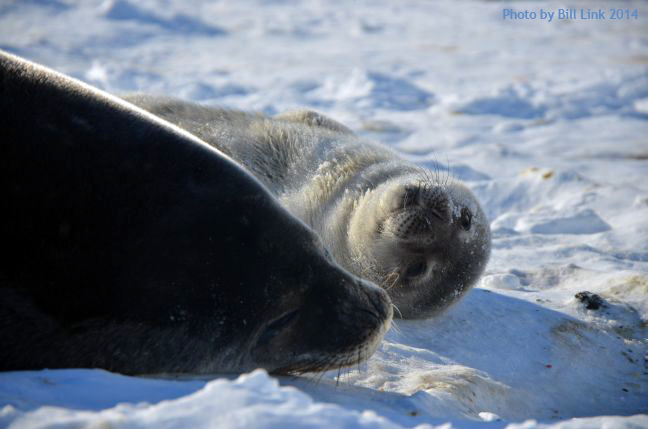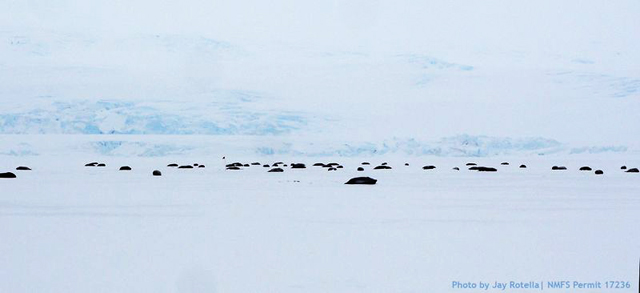Born to motherhoodWeddell seal mom gives birth to unprecedented 22nd pupPosted November 6, 2014
She did it again. One of the big questions I had for the 2014 Weddell seal project field team in Antarctica was whether the very old mom that holds the record for the number of pups born into a Weddell seal colony at Erebus Bay had lived to return again to the study area – and whether she had a new pup this year. Weddell population study lead scientist Jay Rotella had great news: SPENO 5970, as she’s known in the project database, had survived another winter and returned to give birth to her 22nd pup. This is a new Weddell population study record. For nearly a half-century researchers funded by the National Science Foundation have studied the Erebus Bay population, amassing one of the longest population datasets on record for a long-lived mammal species in the wild. Rotella and Robert Garrott, professors in the Department of Ecology at Montana State University, and Don Siniff, professor emeritus at the University of Minnesota, are the principal investigators on the project. SPENO 5970 is a very rare, old Weddell mom. She began producing pups at age 8. She gave birth three years in a row, took one year off, and then showed off her super mom qualities by giving birth over the next 16 years. Following a two-year hiatus, she has given birth over the last three Antarctic summers. Weddell seal moms live an average of 15 years, and usually have around two pups every three years, so this long life and frequency of pupping is very unusual, according to Rotella. NSF-funded research
Jay Rotella, Donald Siniff and Robert Garrott, Montana State University, Award No. 1141326
All of SPENO 5970’s pups were born at Hutton Cliffs. For the past several years, Hutton Cliffs has been a rugged area with jumbled multi-year ice, hummocks, and rough sastrugi. This year, the ice is smooth, first-year ice, and much of the seal colony can be seen for some distance on the flat terrain. This rare old mom was born in 1983 at an area called the North Base of the Erebus Glacier Tongue. This area is relatively close to the Hutton Cliffs pupping colony, where all of this Weddell mom’s 22 pups have been born over her reproductive life to date. Because of the long-term dataset of the Weddell seal population project, the researchers are able to keep track of the Weddells in the study area and access data on more than four decades of seals and several generations. Working with the extensive database, Rotella was able to determine that of SPENO 5970’s first 21 pups, 11 were females and 10 were males. “Of those offspring, two sons and two daughters have been seen again, which is right in line with what we’d expect based on other analyses indicating that roughly 20 percent of the seals make it to adulthood,” Rotella said. Her newest pup is a female. Both daughters known to have survived to adulthood have returned to the pupping colonies to give birth themselves. One is 23 years old and she has produced 13 pups so far. One of that daughter’s pups – a granddaughter of SPENO 5970 – has gone on to have five pups herself. Follow the team throughout the 2014-15 field season at their Weddell Seal Science blog |



For USAP Participants |
For The Public |
For Researchers and EducatorsContact UsNational Science FoundationOffice of Polar Programs Geosciences Directorate 2415 Eisenhower Avenue, Suite W7100 Alexandria, VA 22314 Sign up for the NSF Office of Polar Programs newsletter and events. Feedback Form |




